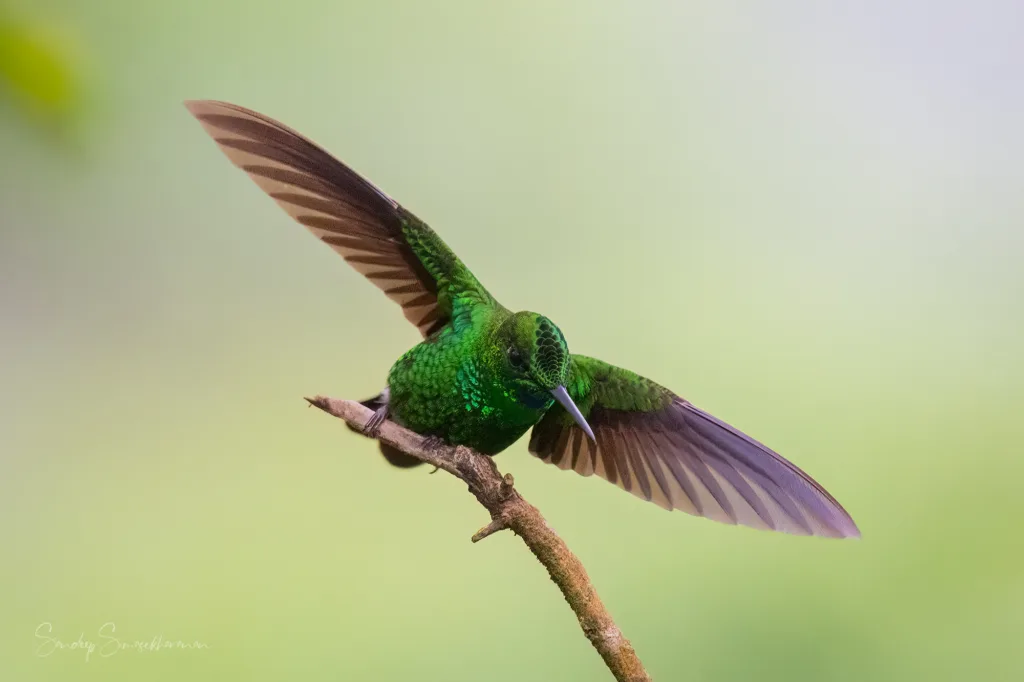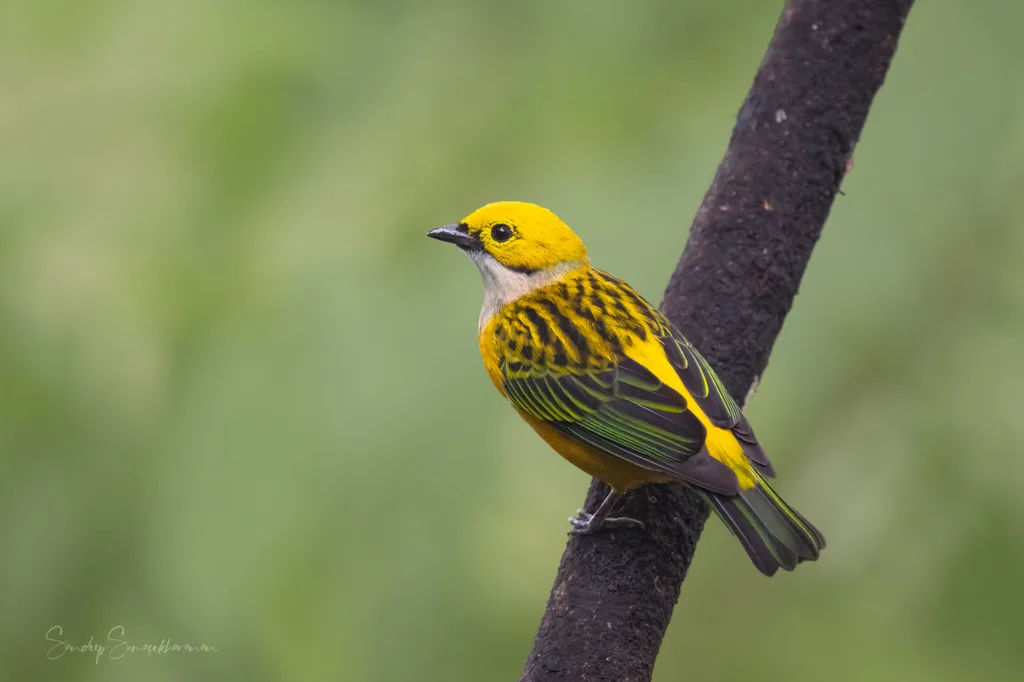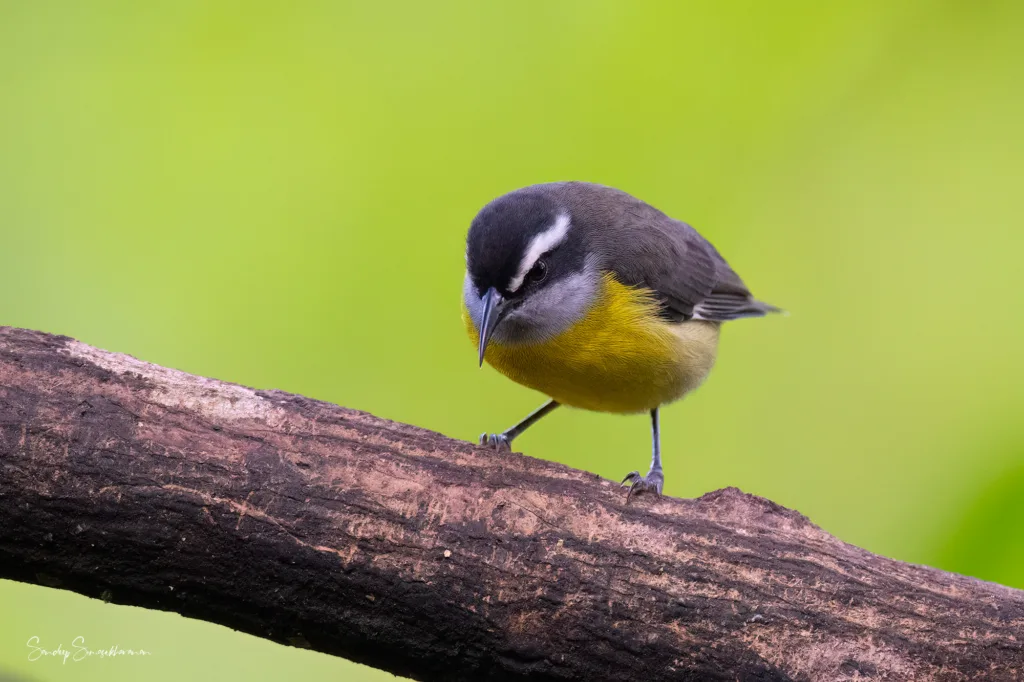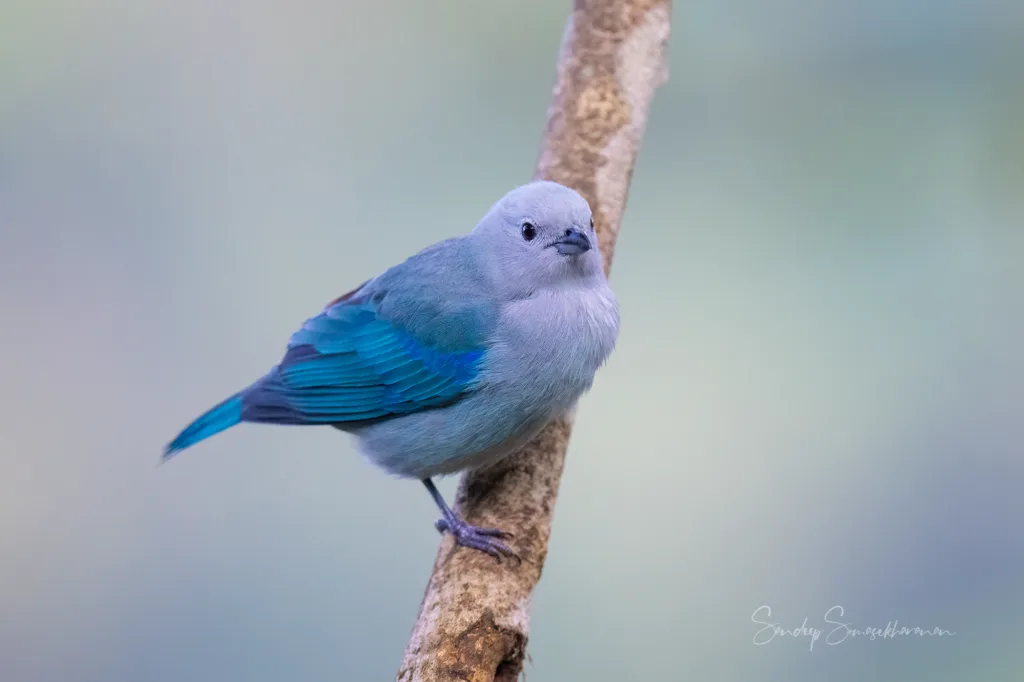This is it.
Sitting in the aisle seat, I crane my neck for a glimpse of what lies outside the windows. Through the wisps of clouds, a verdant landscape beckons. This is Costa Rica — my first dedicated birding trip after ten years.
I have almost forgotten what being on a birding trip feels like. But some things have clung to the subconscious mind, from the countless trips I have made with Sahastra and Beej. How you pack, how you prep, how you travel light. How you pair up underwear in a separate bag, counting the number of days and adding a spare. How you press clothes to save space in the backpack. How you throw in a pair of garbage bags to segregate soiled clothes from clean ones.
Still, a lot has changed this time, especially with technology. My Kindle Scribe doubles up for reading and writing, instead of carrying the dead weight of a couple of books and notepads. On the flip side, I need five kinds of chargers for my gadgets. On my phone, I have the Merlin bird pack for Costa Rica installed and the bird sound ID and photo ID have been absolute game-changers (to the point of making me a lazier birder). Still, for the sake of old times, I am carrying a bird book: The Birds of Costa Rica by Richard Garrigues and Robert Dean featuring a Fiery-Billed Aracari on the cover.
This is still a more comfortable birding trip compared to my weather-beaten 10-day treks in the Himalaya. It is fully managed by Tropical Photo Tours, run by old Instagram acquaintance Supreet and his business partner Magdalena. We fly north from Raleigh, NC, to Baltimore and then change flights to head back south to San Jose, which runs an hour behind Raleigh. The other members of the gang consist of Murukesh, his son Pranav (both birders), and Subha, Murukesh’s wife. This being the Christmas weekend, the flights are crammed.
I peek through the window and find us rapidly descending into a valley flanked by a row of mountains. We touch down and are out of the airplane. No matter which direction we look through the glass windows, there are mountains. San Jose appears to sit in a bowl rimmed with mountains.

The airport is ritzy but unpretentious, with every other wall adorned with pictures of the birds we hope to see. The crowd is mostly young, and the staff is courteous. The officer at the customs counter asks us where we are headed. The names elude us and we flip out the mobile phones and show her the trip itinerary. She returns the passport with the immigration cleared stamp, with 30 days handwritten on it. Even the stamp excites us, for it features a macaw (scarlet or green, we couldn’t tell), a reminder of what is in store for us over the next few days.
Touchdown in Costa Rica
The temperature and the humidity immediately make it feel like a mildly warm day in coastal southern India. Outside, the sidewalk is jam-packed with drivers and greeters holding up placards inscribed with tourists’ names. Chaos and confusion reign as cabbies and rental agents harry us. We inch ahead, trying to locate our driver, and fail to do so in the first pass. We call Magdalena, who immediately gets in touch with our driver. A silver-haired, genial man who would need just a little makeover to be a supermarket Santa, wades through the ocean of people. He introduces himself as Orlando. Another man, who appears to have a speech disability, joins him and grabs our luggage as if he has known us for years. We let him, assuming that he is part of the setup. We head to the indoor parking lot, where a silver Toyota van waits. When the luggage is loaded, the man gestures like one who expects to be paid. All I have is a fiver in loose change, and I give it to him. We had not changed any money to the local currency, Colón, as we were informed that dollars work everywhere.
Orlando says in broken English: “I am driver. Any time, say ‘Orlando stop’, I stop! We now go Cinchona.”
He weaves into the traffic. The cars are smaller than in America. All vehicles are left-hand drive and the city reminds us a lot of India. Small stores with mannequins, roadside hawkers holding “1000 Colón” bags of peanuts, the traffic, and more hawkers peddling their ware at traffic signals. The exchange rate is startling: a Colón is worth less than five hundredth of a dollar. The traffic, though disorganized, is quieter than in India. Orlando informs us that our next stop is a restaurant an hour and a half away. We are famished as the flight served us nothing but snacks. Luckily, Subha has packed some food and we snack as we drive.
Outside the city, the roads get narrower, and greenery embraces us. There are birds on the fences and in the trees, but since we are on the main road, we don’t ask to stop. Soon, we ascend into lush green hills.

We pass a beautiful waterfall, but there are way too many admiring tourists in cars parked beside the road that we decide against stopping.
A restaurant stop – with a side of birds
This is Cinchona, and we pull up at our designated restaurant just a mile ahead. We briefly contemplate whether to leave the cameras in the van when we notice a restaurant patron pointing a telephoto lens at something on the other side. Our question answered, we step in to be assaulted by bird calls and a strange buzzing sound. We pick a seat and notice a crudely fashioned platform feeder outside the back patio stacked with pounds and pounds of plantains, slices of papaya, and orange halves. Beyond is a gorge into which the waterfall that we passed seems to descend.

Whipping out our cameras, we race towards the feeders. Something zips inches past our noses and hovers over a nectar feeder. It is a small green hummingbird, which we later identify as a Green-Crowned Brilliant (Heliodoxa jacula). To our left is a patch of forest and another nectar feeder, which is being defended furiously by a dark-colored hummingbird that is almost as big as a small sparrow. There’s a barbet on the feeder with a face so red it looks cartoonishly livid, and another that is so plain and brown that we assume it to be its mate. We spot another barbet with a radiant blue face, a gorgeously green back, and streaked underparts that we take to be another species.
The activity is so frenetic that we choose to shoot first and ID later. In a few minutes the drop-dead beauties, of which we have only seen pictures, arrive – the Latin American tanagers. An all-black tanager moons us with a scarlet rump. The name is anyone’s guess. A Crimson-Collared Tanager (Ramphocelus sanguinolentus) follows suit, its colors putting the Scarlet-Rumped Tanager (Ramphocelus passerinii) to shame. The incredibly cute Silver-Throated Tanager (Tangara icterocephala) puts on a show, followed by the Blue-Gray Tanager (Thraupis episcopus). We find two other bland-looking tanagers, which we assume to be the females of one of the species. To top, something green with a huge bill lands and we whisper excitedly, “Aracari, aracari!” — though we do not know which one it is.









The waitress waits patiently for our order. She doesn’t speak any English but the menu is fortunately in English and Spanish, and we point out what we want. I order eggs and tortillas while the others order coffee and passion fruit juice. The food arrives shortly but we have no interest in anything but the birds.
No, these barbets are not married!
Another birder joins us and we start chatting. Agustin, who is a local, busts a few myths we have conjured up about the bird ID’s.
The pretty barbet with a blue face and yellow bill is the female of the Red-Headed Barbet (Eubucco bourcierii). The plain brown one is a male Prong-billed Barbet (Semnornis frantzii), a totally different species. What we had thought to be an Aracari is an Emerald Toucanet (Aulacorhynchus prasinus). One of our bland “female tanagers” is actually a male Palm Tanager (Thraupis palmarum). Apart from this, there is an unassuming brown bird that pops up everywhere — we had seen it several times beside the road as we drove up. This, Agustin tells us, is a Clay-colored Thrush (Turdus grayi), the national bird of Costa Rica. We glance at each other and the question on everyone’s mind is the same: “They have quetzals, toucans, macaws, and numerous other beautiful birds — and they pick this one?!”

We shoot a lot, sneak back to the table occasionally to grab a bite, and return to the patio to shoot more. The eggs, prepared with no condiments except salt and pepper, taste way better than the eggs I have eaten all my life (with the exception of my late grandfather’s legendary scrambled eggs). The coffee tastes unique too; it is not as acidic as the coffee we get in the US. Everything turns cold by the time they are half eaten, thanks to the frequent interruptions due to either a new entrant at the feeder or one of the hummingbirds zipping by.
Malayalis? In Costa Rica?!
In the midst of this melee, something else suddenly strikes me as out of place. Someone is speaking Malayalam (our native tongue) at the table behind us. And just like that, as in the legendary cartoon where Neil Armstrong chances upon a Malayali’s tea stall as he steps out of the lunar rocket, we run into a Malayali family from Texas that is visiting Costa Rica. They are not birders and are evidently amused at how we scramble across the deck every time something new lands at the feeder. Agustin and we swap Instagram handles, when we realize we are already connected! Small world indeed!




The light starts fading and a mist rises from the valley. The photos are harder to expose with the whiteout in the background. Orlando lounges on a chair, in no rush at all, and we finally ask him if we can leave. He nods and we load up our gear back into the van. There is no check system, so we go to the front desk and point out what we have eaten on the menu. The lady at the counter adds up everything on a calculator and converts the bill to USD: $11. We resume our journey along the winding mountain roads. In less than an hour, we pull up at La Quinta resort at Sarapiqui.
Rest stop at Sarapiqui
La Quinta is a quaint little eco-lodge designed to be low-key and sustainable. Brick-coloured cottages are interspersed with pockets of natural areas, connected by lobbies named after the local wildlife. Beatriz, the lady at the front desk, speaks English and gives us a good account of the facilities and the trails all around. It is past sunset and we are exhausted from the journey, so we decide against further exploration. Orlando assures us that he would be staying at the lodge and driving us around for the entire trip.
Our rooms are well maintained with netted patios and a hammock. A tremendous spread awaits us at dinner, all authentic Costa Rican cuisine: sliced fresh fruit, spaghetti omelets, palm hearts (something we had never tasted), tuna pasta, and what would be our favorite throughout the trip — roasted ripe plantains. After a hearty meal we walk around for a bit and retire to our rooms, exhausted but excited about what lies in store for us in the days ahead.
Read Part 2 – Muddy Boots In Guapiles
If you liked this post, you should follow Sandy on Instagram
- Costa Rica Diaries – Parting Gifts - May 5, 2024
- Costa Rica Day 6 – Resplendent Quetzal: Part Bird, Part God and Full-Time Economy Driver - April 17, 2024
- Costa Rica Day 5 – Toucan Trees and Wild Dreams Coming True - March 22, 2024



